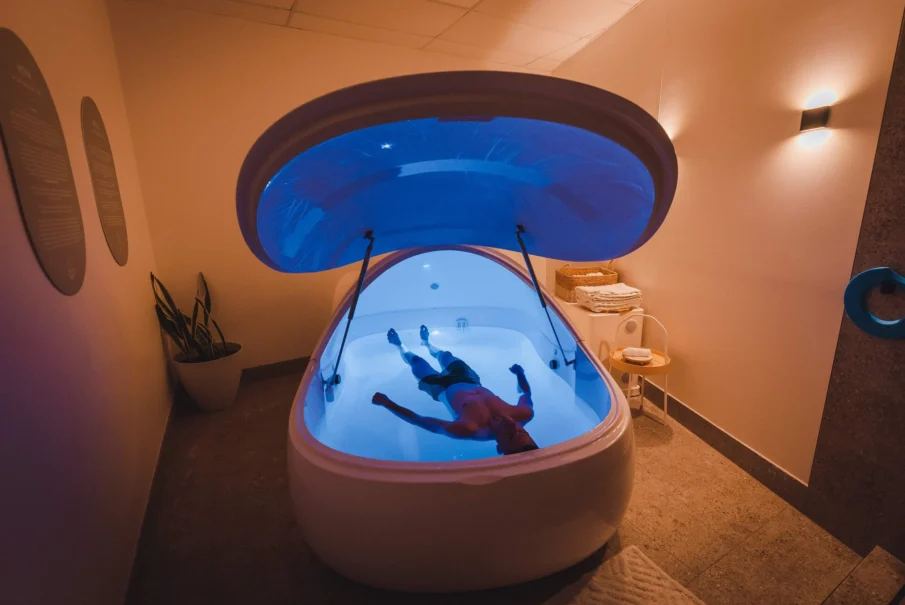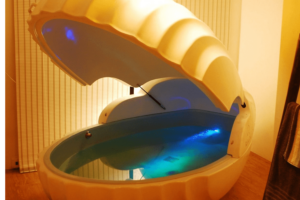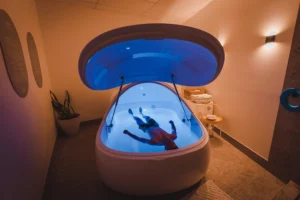Whether you’re trying float therapy for the first time or you’re a regular floater, one question always comes up: “How long should a float therapy session last?”
While the idea of lying in silence and darkness for an extended period might seem daunting at first, the right session length can make a significant difference in the effectiveness of float session therapy. The duration affects everything from your physical recovery and stress levels to your ability to disconnect mentally and emotionally.
In this blog, we’ll explore optimal float session lengths based on your goals, experience level, and scientific research. We’ll also explain how float therapy services customize sessions, and what kind of float session benefits you can expect at different durations.
Understanding Float Therapy Basics
Before diving into time recommendations, let’s briefly revisit what happens during float therapy sessions:
- You enter a lightproof, soundproof tank filled with warm Epsom salt water.
- The water supports your body weight, making you feel weightless.
- All external stimuli (light, sound, gravity) are minimized or removed.
- You lie back and allow your body and mind to shift into a deep, meditative state.
Most float therapy services offer sessions ranging from 30 to 90 minutes, although longer floats (up to 2 hours or more) are available for experienced users.
How Long Should a Float Therapy Session Last? A Breakdown by Duration
30-Minute Float Sessions
Best for: Beginners, busy schedules, mental reset
- Ideal for a quick mental reset or introducing someone to the sensation of floating.
- Some physical and mental relaxation, but not deep enough for full therapeutic benefits.
- Not recommended as a regular practice unless time is extremely limited.
Float Session Benefits: Mild stress relief, mental clarity, light relaxation
60-Minute Float Sessions (Standard Duration)
Best for: First-timers, general wellness, ongoing stress management
- This is the most commonly offered duration by float therapy services.
- Allows the body time to relax into the float environment and the mind to enter theta brainwave states.
- Benefits compound after 45 minutes, as deeper relaxation and sensory detachment begin.
Float Session Benefits: Deeper relaxation, reduced stress, moderate muscle recovery, enhanced creativity
90-Minute Float Sessions (Optimal for Most People)
Best for: Chronic stress, athletes, creatives, meditation lovers
- Allows your mind and body to fully enter the deepest stages of relaxation.
- Most users find they lose track of time and achieve mental stillness in the last 30 minutes.
- Many of the most powerful float session benefits including pain relief, deep mental clarity, and emotional processing occur in this window.
Float Session Benefits: Profound calm, faster injury recovery, mental reset, better sleep
120 Minutes or More (Extended Float Sessions)
Best for: Experienced floaters, trauma healing, creative breakthroughs
- Available at select float therapy services; usually by request or for special programs.
- Can lead to altered states of consciousness similar to deep meditation or dream-like awareness.
- Requires experience, as beginners may find it difficult to relax for this long initially.
Float Session Benefits: Emotional release, deep physical healing, insight, long-term clarity
How to Choose the Right Float Session Length for You
Choosing the ideal length depends on your goals and experience with float session therapy.
| Your Goal | Recommended Float Time |
| First-time experience | 60 minutes |
| Ongoing stress management | 60–90 minutes (weekly) |
| Chronic pain or physical recovery | 90–120 minutes (bi-weekly) |
| Anxiety or emotional processing | 90 minutes |
| Creativity or problem solving | 90–120 minutes |
| Deep meditation or spiritual practice | 120+ minutes |
Why More Time Often Means More Benefits
Float therapy sessions are cumulative in nature. The longer you float (within safe, guided limits), the deeper the relaxation and healing effects become. Here’s why:
- It takes 20–30 minutes just to fully relax: Most people need this time to disconnect mentally and physically.
- Theta brainwave activity starts around 30–45 minutes: This is the state linked with creativity, memory processing, and self-reflection.
- Muscular tension releases gradually: Deeper tension and inflammation begin to ease after 45 minutes.
- Mental clarity and insight increase over time: As distractions fade, deeper thoughts and emotions surface.
That’s why most float therapy services recommend at least 60 minutes to unlock meaningful float session benefits.
How Often Should You Float?
The length of your session also ties into how often you float.
| Frequency | Ideal Session Length |
| Once a month | 90 minutes |
| Bi-weekly | 60–90 minutes |
| Weekly | 60–90 minutes |
| Twice per week (therapy) | 60–120 minutes |
Regular, consistent float therapy sessions at your ideal length offer long-term support for mental health, pain management, and emotional balance.
Customizing Float Therapy Services
Many centers offering float therapy services provide flexible options:
- Introductory 30-minute sessions for new users
- Standard 60-minute sessions for regular floaters
- Extended 90 or 120-minute packages for therapeutic goals
- Monthly or unlimited float memberships
Don’t hesitate to talk with staff about your goals—whether it’s pain relief, sleep improvement, or creative exploration. They’ll help you select the right session length and frequency to match your wellness plan.
Pro Tips for Maximizing Your Float Time
- Arrive Early: Give yourself time to relax before starting.
- Avoid Caffeine: It can make it hard to relax during your float therapy session.
- Hydrate: Drink water beforehand to feel refreshed and avoid dizziness afterward.
- Use the Entire Time: Avoid checking the clock. Let the session guide you.
- Float Regularly: The more often you float, the easier it becomes to enter deep states.
FAQs: Float Session Duration and Effectiveness
Q1: Is 60 minutes enough for a good float?
Yes, 60 minutes is the standard and often enough to experience strong float session benefits, especially if you’re consistent with your sessions.
Q2: Will I get bored during a 90-minute float?
Unlikely. Most people lose track of time. The sense of boredom fades as your body enters deeper relaxation and your thoughts settle.
Q3: What if I fall asleep during a long float session?
That’s okay—and common! The salt keeps you buoyant and safe. Many people find a nap in the tank more restorative than several hours of sleep.
Q4: Is there such a thing as floating too long?
Float tanks are safe, but most float therapy services limit sessions to 2–3 hours. Going longer isn’t dangerous, but diminishing returns may set in for some users.
Q5: Can I build up to longer floats over time?
Absolutely. Start with 60 minutes, then gradually increase to 90 or 120 minutes as your comfort grows. Many seasoned floaters find longer sessions more transformative.
Conclusion: Find Your Float Time, Find Your Peace
How long should a float therapy session last? The short answer: as long as it takes for your body and mind to fully let go. For most people, that sweet spot is 60 to 90 minutes. Longer sessions can unlock deeper emotional healing, insight, and recovery—especially when used regularly as part of a wellness plan.
With the growing availability of float therapy services, it’s easier than ever to experiment with session lengths and discover what works best for you. Whatever your needs are mental clarity, physical recovery, or emotional balance, float session therapy offers the space and time to reset.
The next time you book a session, don’t rush the experience. Trust your body, allow yourself time, and float your way to better well-being.





